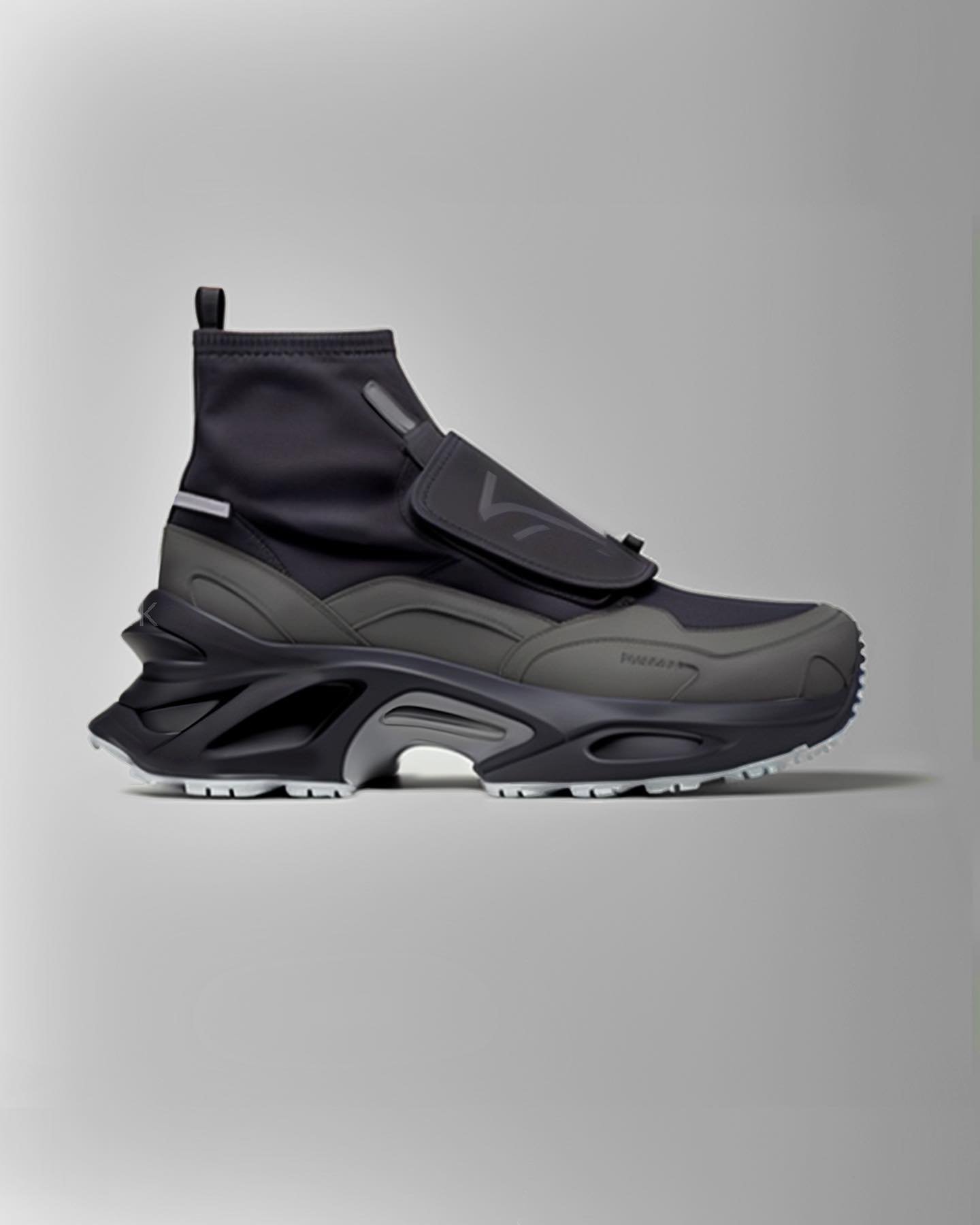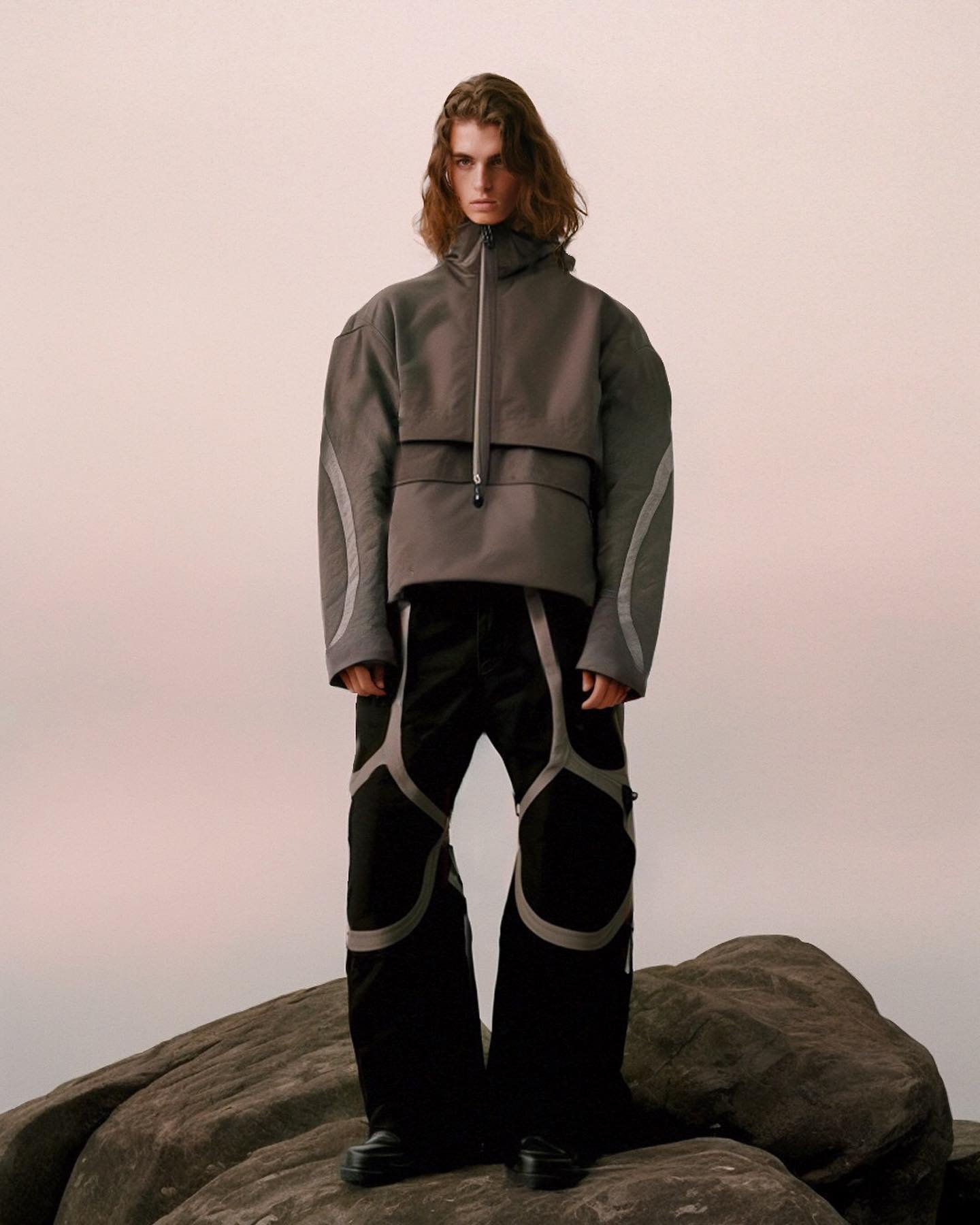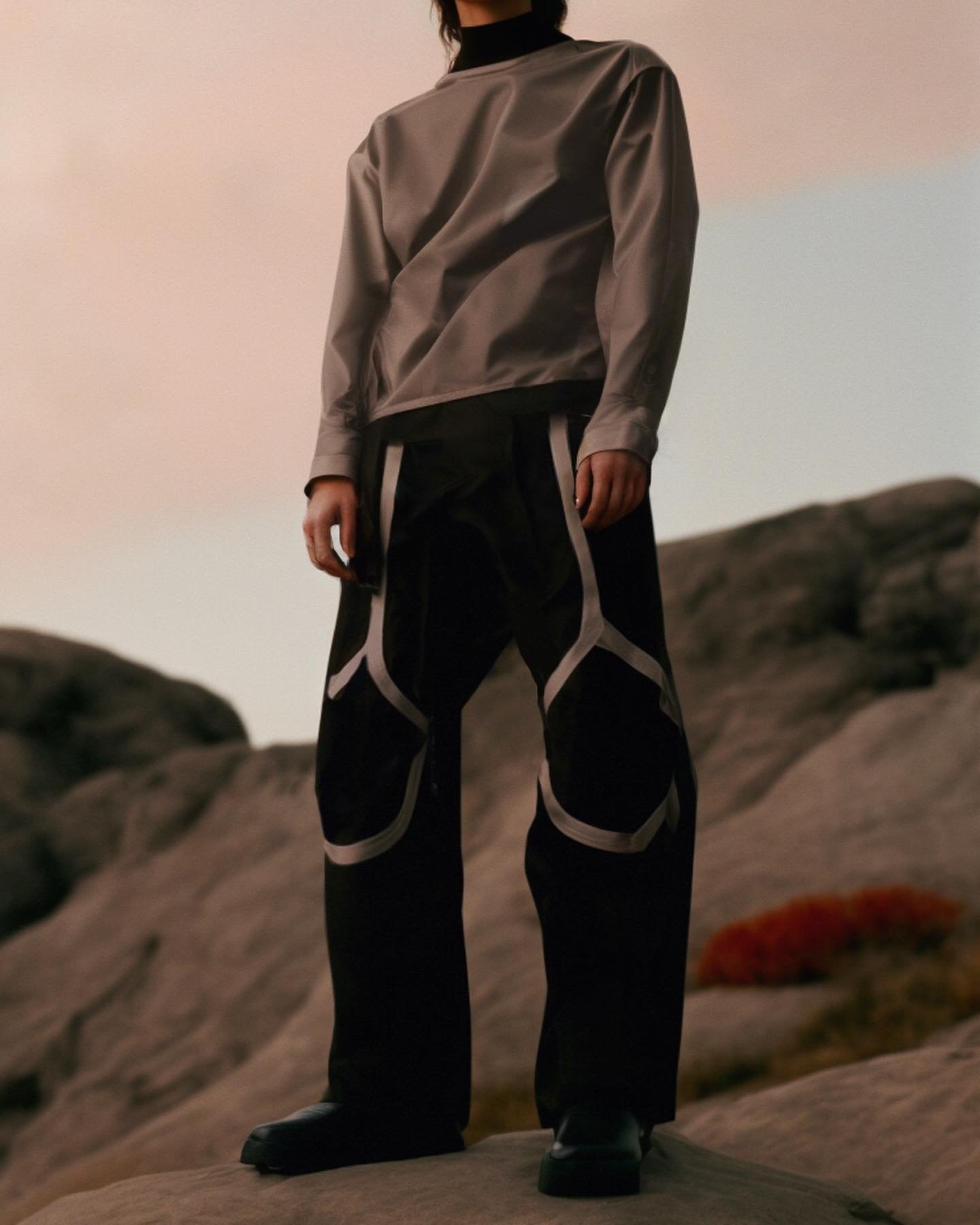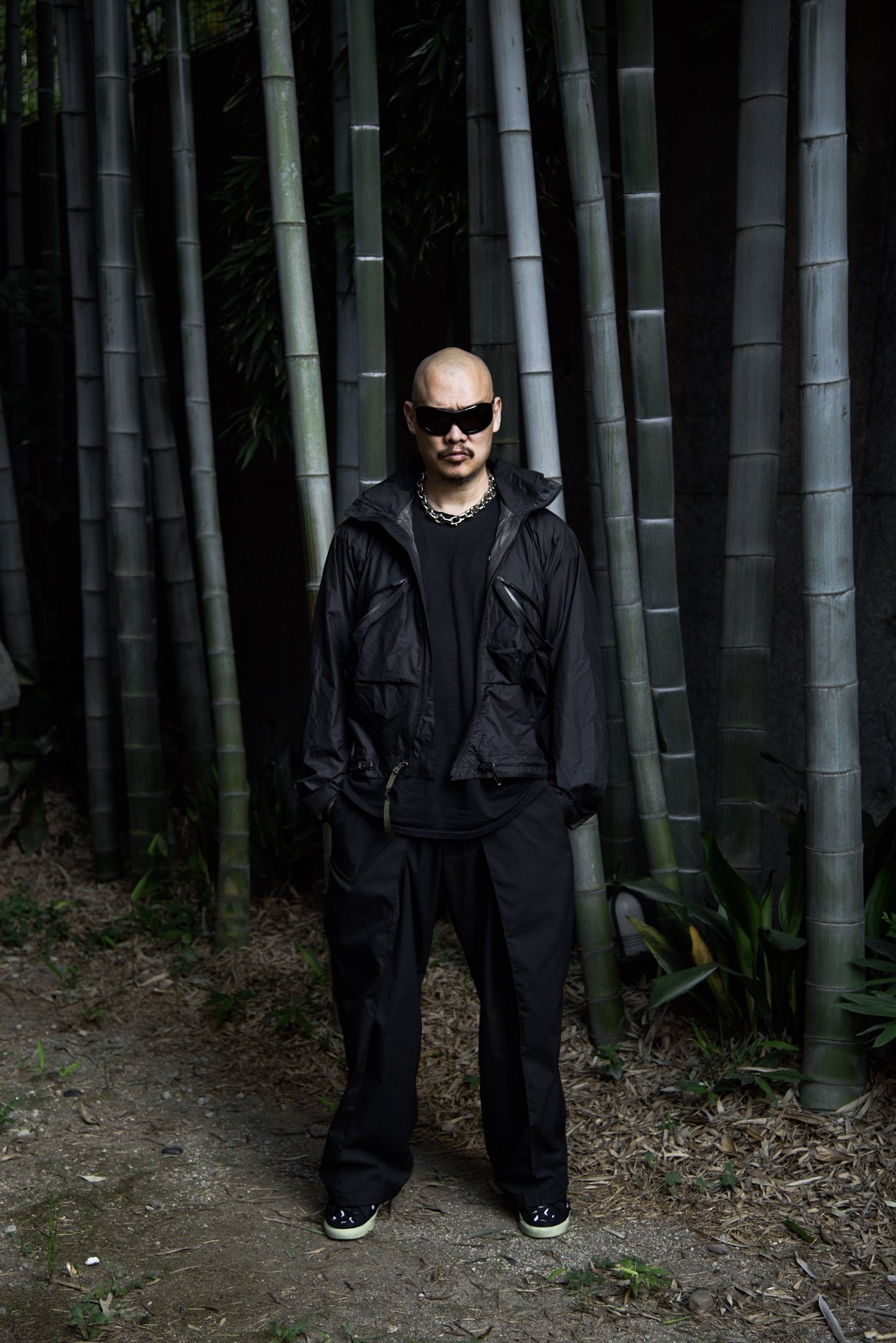IS AI THE FUTURE OF FASHION? – A Tokyo Editorial and Critical Conversation with NEW FACET

Much the same as with any kind of emerging and developing tech, AI is at the epicentre of controversies right now in all corners of creativity: fashion, art, photography, and even music. The technology to many is a seemingly simple tool used to orchestrate fabricated creativity, but the medium is such a grey area that its often misunderstood, misinterpreted, and overlooked as a true art form.
It is true that certain results from AI are easily achieved; the naysayers are quick to recognize this. What many people overlook though are the true creatives that don’t use this newfound power for instant stardom, but instead utilise it as a tool for even greater results. Much the same with any type of medium, be that art, music, or photography, the development of better technology has created an excursion into more streamlined, faster, and often more refined results. This is not to say that traditional art forms should be shunned away due to better technology, but instead of seeing AI as a culprit of mass-theft to true creatives, perhaps we should embrace it as a new tool to further broaden our horizons.
AI is something we have featured many times recently on our platform. One of which was on digital fashion designer, NEWFACET [@NEWFACET]. The German-based creative is harnessing the power and capabilities of AI to create contemporary fashion, one which blends avant-garde nuances with functional aesthetics. With a recent partnership with GORE-TEX studios for Paris Fashion Week, NEWFACET has emerged onto the scene swiftly and is disrupting it through the power of technology.
Fashion has forever been a playground for self-exploration; discovering new ways to interpret cultures. NEWFACET does this through digitally designed and rendered identities. His tagline ‘None of the People or Clothing You See Here Exist’ captures the essence of his brand perfectly. While it’s true that his creations are entirely unique, it’s what lies beneath in the messaging here that truly captures what NEWFACET is achieving. An exploration into unventured territories, and the realization that these things are now possible with the power of modern capabilities.
His clothing itself is versatile yet also streamlined, perfectly capturing the current vogue of functional fashion yet with a step towards the future that has yet to be accomplished in the current fashionscape. Blurring the lines of contemporary wearability with sci-fi forms, NEWFACET’s designs are both staple and standout pieces. What truly allows the digital creator's brand to live amongst true fashion entities is that it has a real identity. It holds as much continuity in its visual language as any other brand living in reality.
We believe in this newfound power, and so much so that we invited NEWFACET to explore the sabukaru universe through his lens, flirting with the possibilities that could be in store for us with AI. Colliding the physical talents of the ever-impressive Ozzy’s Vision on styling, with his razor-sharp contemporary-urban blend, and NEWFACET’s technical genius, the digital creator has produced sabukaru’s very first AI Tokyo editorial. This editorial has been generated by NEWFACET and styled by Ozzy using image references and custom-coded AI software engineered specifically for this project.
But how could someone who has never brought out a product be such an imperative figure in fashion design right now? Because NEWFACET, whether you choose to believe it or not, is using AI in the way in which it is meant to be. Allowing human creativity to drive the software for results. This is not a simple curation of word references and voilà, this is someone already embedded in digital innovation that is using AI as an extra arm in his operations.
This statement is sure to cause controversy, so to get a true understanding of this new universe we have spoken to the man himself. Diving deep into the topic through a non-bias and critical standpoint, we establish the ins and outs of how AI works, the knock-on effects it may have for society, and if this new development of technology marks the beginning or the end of fashion.
First of all, can you please introduce yourself to our network and tell us a little bit about what you do?
My name is Luca. I’m a Spanish multidisciplinary designer based in Germany. I’ve been in the creative space for the last 10 years, working primarily in the fields of graphic design, digital experiences and 3D design.
How did you get into the AI universe?
I’m always interested in new emerging technologies and workflows that can elevate my creative process. I'm a big fan of node-based and creative coding tools, for example. My first touchpoints with AI were two years ago with some of the rudimentary diffusion tools and GAN models that existed back then. You could only create really abstract visuals with them at the time, but it was already interesting to explore what’s possible and which unseen aesthetics you could create with them.
Last year, the technology in the field of diffusion-based AI improved dramatically, and I really deep-dived into this topic since I saw how it can reshape a lot of the existing workflows in the area I work in and which potential it has.
What led you to make the choice of creating AI generated fashion?
I was always inspired by Designers like Samuel Ross and Geo Owens who also started in the graphic design space and expanded their vision to other forms like Fashion, Architecture, Installations and more. Seeing the world they created was super inspiring for me.
The workflow and process I created using AI helped me visualize my own world and share it with others in a way that wasn't possible before.
When designing your digital clothing brand, what is some of the inspiration and vision behind its identity?
I primarily create clothing Concepts with functional/technical attributes. Most of the pieces are influenced by my background in Graphic Design and my interest in Architecture and other Art forms. A lot of the colorblocking for example resembles a lot of the same shapes and structures I'm creating outside of fashion.
I like fluid yet contrasting form structures that have a futuristic feel to them, I try to combine them in my clothing concepts with interesting constructions and panelling.
Can you tell a bit about your workflow? How do you ensure that this AI-generated fashion is not only aesthetically pleasing but also genuinely functional and practical for everyday wear?
For my Clothing Visualizations I'm primarily using Stablediffusion, it’s an opensource image diffusion model which you can further develop on your own, it’s currently the system that is used by most other applications in the background. I created some custom tools and workflows on top of an environment called Automatic1111. I created a custom finetuned version of it that is specialized in realism and has an aesthetic feel to it, a lot of the other options that existed back then looked more stylized or cheap in their visualisation capabilities.
This setup has the benefit over other tools that you're not limited to text prompts. I can use it as a render engine to visualize photorealistic 3d Scenes or Concept Sketches which blends in with the knowledge and background I have. Even with ideas, a prompt that doesn't fulfil my imagination or doesn’t make sense at first, I can change the Textures or the cuts of the Garments later to my likeness with different methods.
This gives me the perfect balance of generative/exploration workflows and concrete visualization capabilities of my ideas.
What are some of the brands right now that you take a particular interest in?
Their some all-time favorites like Kiko and Undercover that always resonate with me. I currently really love Roa Hiking's approach to functional clothing.
The space is also packed with super many talented people. Through the start of Newfacet, I got to know many new People, such as Orfeo Lanz, Remi Van Derhagen, and Raff Godfrey. Who have all inspired me in their own way. Whether it's their perspective on sustainability, unique approaches to textiles and production, or their design approach…
Did you have any previous experience working in the fashion industry prior to this?
More from a Digital Design side. I had some experience with Clo3d/Marvelous a 3d CAD software specifically developed for garment design. I also worked on the Branding and Website Design of sneaker.de, an online magazine focussing on stories and people of sneakers and streetwear and did some other digital experience work for Nike, Adidas and New Balance.
We recently saw that you were at Paris Fashion Week, collaborating with GORE-TEX. How was this experience for you, being able to take your digital content and put it into a physical experience?
It was a mind-blowing experience for me, the best in many years. Together with Advanced Research we re-imagined conceptual Gore-tex looks of the past and envisioned functional products of tomorrow.
It was great to see so many people from the industry for the first time, people I have admired for a long time. I got to meet them in person, talk to them about their work, and show them our new capabilities. Connecting with these people and discussing various topics was the best part for me.
For AI, this is just the start for people to start seeing its capabilities. But, in your opinion, how sustainable is the market for AI-generated creativity? Can you see it dying down or is it here to stay?
I think the first spark and interest already happened. A lot of people are now aware, through popular tools like ChatGPT, Midjourney, and others, of how powerful AI is and how it will reshape certain sectors over the next years. For AI image visualization, it will become more controllable and streamlined with existing tools that people are already using, and new ones will emerge that fit into their current workflows. Render engines like OTOY are currently working in this space, and Adobe is working on its own tool called Firefly, for example. AI-generated creativity is also expanding more and more to other mediums like video and 3D.
Are there any other ways you think big fashion brands can use AI to their advantage?
It can serve as an inspiration tool for designers, but can also help visualize concrete ideas better for clients and production. I think in the future there will be software applications capable of generating 3D visualizations of products directly from CAD drawings, without a lot of the manual steps that are currently needed. They will help Designers in the creation of tech packs and make the communication with producers easier.
The intersection of 3d printing and AI is also really interesting which could potentially move us away from passive consumption towards a culture of personalized creation using 3D printed fabrics. There are still a lot of steps to go but if the barriers get lower and lower in the creation process and the created outcomes become more practical this could empower a lot of people in the future to create their own products.
As an AI creative yourself, what are some of the personal debates you have had with people, and what were your arguments in response?
Some people in the space see AI as a threat. I do not believe that AI will make human creativity redundant. Instead, I think these programs, like others before, will help good designers and artists improve. Programs can only do something if humans make them do it, and the quality of the outcome will only be determined by the quality of the human running the program.
There is a mass stigma behind AI-generated content, with people challenging the authenticity and originality of it all and claiming it's a form of plagiarism, discrediting real creators. What would you say back to these naysayers?
I think for this part it’s interesting to take a look at how diffusion-based AI systems work. At the beginning there is a pre-selected Dataset for many Systems this is a Dataset called Laion - the images are associated with certain text descriptions. Diffusion models train by adding noise to images, which the model then learns to remove. In this process the Model learns different concepts, for example, how does a shoe look like, what makes an object shiny etc.
These concepts are represented by billions of parameters in a multidimensional space called latent space. These systems do not reference images directly, but rather they learn concepts which they can combine similar to humans. You can create highly transformative work with these systems, if you use them right. But there are also people who train systems to copy a certain style of an artist or use prompts in systems which are artist included and specifically try to imitate them. This is definitely a downside - with technological progress it’s also becoming increasingly easier to copy other people’s art. But I think every tool can be used in a good way or in an unethical way. It’s important to direct the blame in the right place.
Do you see the role of AI in fashion intersecting with other emerging technologies, such as virtual reality, augmented reality, or blockchain?
There is a rise in digital clothing brands and designers. Companies like Dressx and Zero10 are offering AR try-ons of their digital creations. I think this sector will benefit from the recent developments. In the past, Augmented Reality has still looked a bit clunky in terms of rendering and simulations. AR capabilities will improve over the next few years. Advancements in AI technology allow for more accurate interpretation of video material, and cloth simulations can be rendered much faster and more accurately in real-time. Move.ai, for example, is already showcasing some great examples in this space.
Gaming and VR Experiences will be also more immersive in the Future through the development of Neural Radiance Fields, a 3D neural rendering Technology that can create lifelike 3D captures of environments and Objects. Currently, a lot of it consists of scans from environments but it’s also expanding to be more generative and editable so the digital experience will soon be not limited by the creation of assets.
There are also concerns about bias and discrimination in AI algorithms. How can we ensure that AI-generated fashion is inclusive and does not promote harmful stereotypes or biases?
This is really a point that technology has always been biased and it's a huge difficulty we have to sort out. Humans determine what datasets, variables, and rules the algorithms learn from to make predictions. Both of these steps can introduce biases that become embedded in AI Models. A good thing is that the Signals in AI Models, can be analyzed, if the signals indicate bias, we have the opportunity to do something and fix it - throw out certain signals, collect more meaningful signals, build separate models for impacted groups etc. A lot of the Models that are currently out their going through these steps to remove biases, but until now the responsibilities to create inclusive work still heavily relies on the person that uses them.
Many people are arguing that this software should be monitored rather than allowed to continue to evolve and develop. As an AI creative yourself, do you agree with this statement, or should we embrace the further development and implementation of AI?
I think responsibility needs to be at the forefront when deploying and continuing to develop AI. I think AI is currently rolled out too fast in some aspects, like large language models. Big tech companies are in a race to deploy it as fast as possible to not be left behind, not focusing enough on the impact it has on society. I believe that the future of AI models should be open source, transparent, and driven by non-profit organizations so that this new technology is accessible to everyone and to prevent monopolization by large corporations or individuals.
For anyone wanting to get into AI art, could you advise on any tips, best practices, or starting points?
For people who just want to experiment with text-to-image generation to visualize ideas and concepts, I can suggest tools like midjourney or krea.ai these are the most convenient tools. For people working in the design industry who want to dive deeper into diffusion-based workflows and want to be more flexible in the creation process, I can suggest Stable diffusion.
Finally, what does the future hold for NEW FACET? Can we expect any physical releases from your brand?
Seeing my Vision unfold in the real world would be the next goal. I’m currently refining the Concepts and Designs together with a friend. Outside of that, I will keep exploring new ways to enhance the creative process and try to push the boundaries of what’s possible.
Ai Editorial Credits
Producer and Art Director: Joe Goodwin
Stylist: Ozzy’s Vision
AI Creative: NEWFACET
Article Credits
Words and Interview by Joe Goodwin


















































![]VEXED GENERATION IN CONVERSATION With Not For Archiving™](https://images.squarespace-cdn.com/content/v1/57825361440243db4a4b7830/1699460542912-L5GV3VWS514P0KBULOK9/JOE+TECHNICAL+JACKETSSHOP+DISPLAY.png)